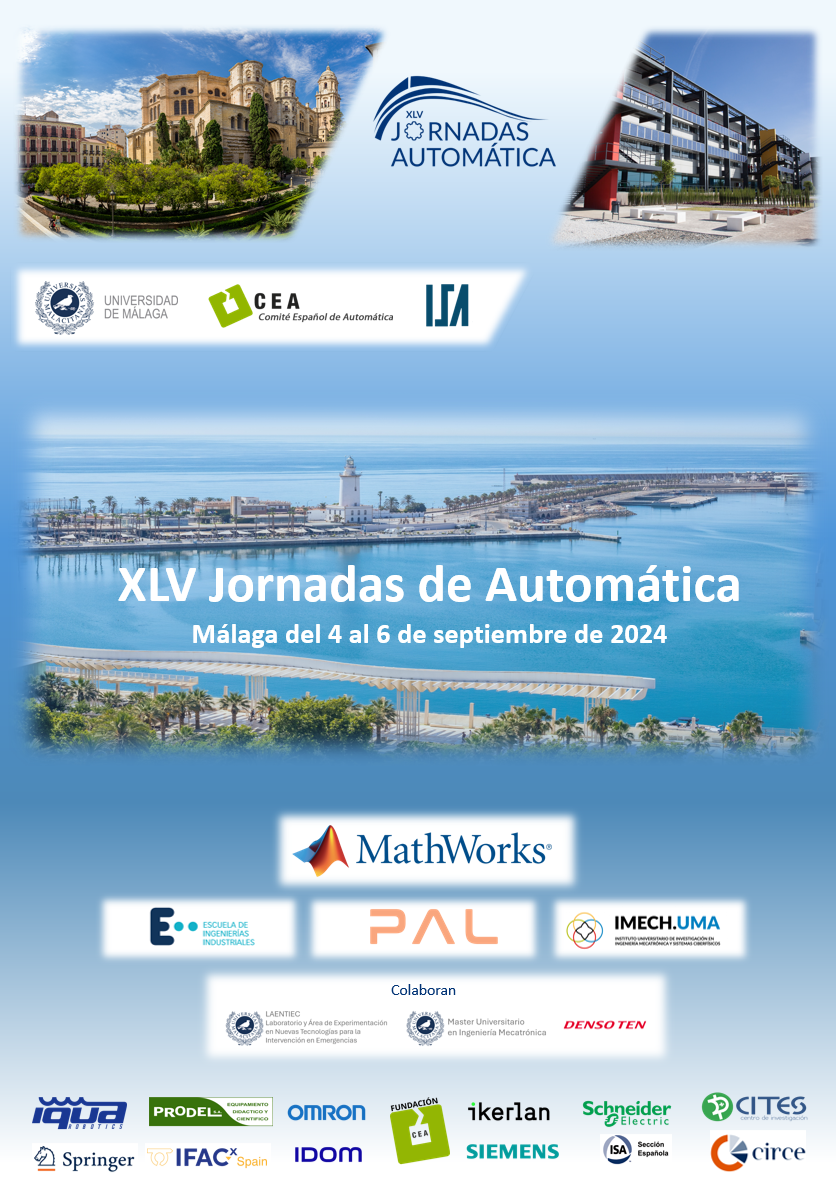Escape room en Ingeniería de Control
Una aventura gamificada desarrollada en la Universidad de Almería
DOI:
https://doi.org/10.17979/ja-cea.2024.45.10794Palabras clave:
Educación en Control, Innovación Docente, Nuevas metodologías docentes para los planes de estudio de Ingeniería de ControlResumen
La gamificación se refiere a la utilización de métodos y tácticas de juego en áreas no tradicionales, como la educación. En este trabajo se describe una experiencia basada en la gamificación para la enseñanza del control automático en los estudios de ingeniería, como alternativa o apoyo al sistema de enseñanza tradicional. Esta experiencia se desarrolla en el marco de un proyecto de innovación docente desarrollado en la Universidad de Almería. En concreto, se presenta el diseño y desarrollo de un escape room para la asignatura de Automatización Industrial, así como unas pruebas preliminares llevadas a cabo en el curso académico 2023-2024. Aviso, en el artículo se describe en detalle la construcción del escape room, pero solo se dan pinceladas de la mecánica del juego y de las pruebas incluidas en este, no hacemos spoiler. Para descubrir el juego al completo, le invitamos a que lo resuelva.
Referencias
Armie, M., Membrive, V., 2022. Escaping boredom in the classroom: Breakouts, breakout boxes and escape rooms. Cambridge Scholars Publishing.
Axelson-Fisk, M., Gentsch, M., Jackson, R. R., Knorn, S., Knorn, S., Paasche, L., Topalovic, D., Voit, S., 2022. Ctrl+ esc: An escape/exit room to teach control and its relevance to an audience outside engineering. IFAC-PapersOnLine 55 (17), 255–260.
Buxton León, B., 2022. Estudio y dise ̃no de un mecanismo alternativo de comprimir muelles. B.S. thesis, Universitat Politècnica de Catalunya.
Campillo-Ferrer, J.-M., Miralles-Martínez, P., Sánchez-Ibáñez, R., 2020. Gamification in higher education: Impact on student motivation and the acquisition of social and civic key competencies. Sustainability 12 (12),
Gallarta-Sáenz, D., Rico-Azagra, J., Gil-Martínez, M., 2023. Learning enhancement of control engineering: A competition-based case. IEEE Access.
Jo, J., Jun, H., Lim, H., 2018. A comparative study on gamification of the flipped classroom in engineering education to enhance the effects of learning. Computer Applications in Engineering Education 26 (5), 1626–1640.
Lee, D., 2011. What is gamification and how gamification will change our life? Journal of Digital Design 11 (4), 449–457.
Leon, A., Peña, M., 2022. Gamification tools in the learning of shipbuilding in the undergraduate marine engineering education. Computer Applications in Engineering Education 30 (2), 458–471.
Prusa Research, s.f. Prusa mk3s 3d printer. https://www.prusa3d.com/es/categoria/original-prusa-i3-mk3s/, ́Ultimo acceso: 22 abril
Sangkyun, K., 2018. Gamification in Learning and Education. Springer.
Serna, L., Albán, F., et al., 2003. ́Acido polil ́actico (pla): Propiedades y aplicaciones. Ingeniería y competitividad 5 (1), 16–26.
SolidWorks, D. S., 2005. Solidworks®. Version Solidworks 1.
Toimah, T. F., Maulana, Y. I., Fajar, I., 2021. Gamification model framework and its use in e-learning in higher education. IAIC Transactions on Sustainable Digital Innovation (ITSDI) 3 (1), 28–35.
Urgo, M., Terkaj, W., Mondellini, M., Colombo, G., 2022. Design of serious games in engineering education: An application to the configuration and analysis of manufacturing systems. CIRP Journal of Manufacturing Science and Technology 36, 172–184.
Wootton, C., 2016. Serial peripheral interface (spi). Samsung ARTIK Reference: The Definitive Developers Guide, 335–349.
Descargas
Publicado
Número
Sección
Licencia
Derechos de autor 2024 José González-Hernández, Fernando Cañadas-Aránega, Ángeles Hoyo, Pablo Otálora, Igor Pataro, Juan Diego Gil Vergel

Esta obra está bajo una licencia internacional Creative Commons Atribución-NoComercial-CompartirIgual 4.0.





